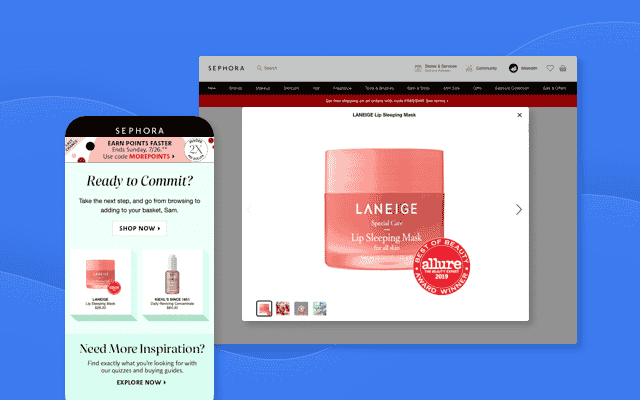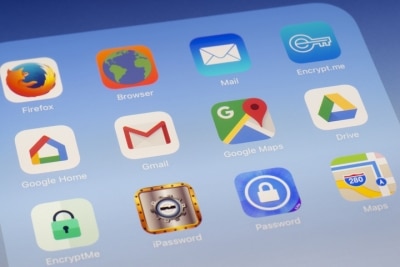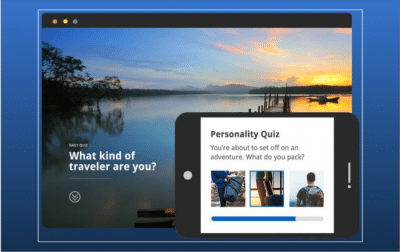Article
What Makes Sephora Such an Outstanding Omnichannel Retailer?
March 25, 2021

The next time someone questions the amount of time and money you’re spending on personalization to unify the customer experience, tell them about Sephora—the queen of omnichannel retail sitting on top of the fourth annual Retail Personalization Index as an undefeated champion.
Store closures during the COVID-19 pandemic shut off access to one of the cosmetics empire’s essential sales experiences: in-store “try before you buy” sampling and technique demonstrations, classes, and consultations.
After closing nearly all of its retail outlets by March 2020, Sephora quickly switched to VR (virtual reality) demos and appointment-based virtual tutorials, consultations, and personal shopping. Even after reopening mall, stand-alone, and pop-up locations last August, the brand continues to rely on virtual experiences instead of hands-on, in-store interactions whenever possible.
In a letter to shareholders last August, parent company LVMH said that Sephora is still gaining market share, “illustrating its inventiveness and the effectiveness of its omnichannel strategy. Online sales grew very strongly over 2020.”
Focusing on a Seamless Customer Experience
Switching from stores to ecommerce was a painful transition for some retailers, but Sephora’s work in previous years to incorporate personalization technology and build up its ecommerce business continues to pay off.
Sephora previously invested heavily to build up its ecommerce division. And, as you can imagine, that came in handy when it was able to handle the sudden explosion in online shopping better than many of its competitors after COVID-19 reached the U.S. It also fused the brand’s digital presence with its brick-and-mortar stores to create a seamless shopping experience across channels long before 2020 put its efforts to the ultimate test. According to Mary Beth Laughton, EVP of Omni Retail, “omnitude” is Sephora’s secret ingredient.
“It’s about creating an attitude and a mindset around putting the consumer at the center of everything,” she said on a recent episode of the NRF’s Retail Gets Real podcast. “We coined this term ‘omnitude,’ and it’s this idea that we’ll do whatever we can to delight our consumer wherever she’s shopping with us.”
How Technology Recreates the Store Experience Online
Brick-and-mortar stores are essential to Sephora, in part because they’re where three-quarters of customers transact for the first time. They also provide the brand with valuable data it can’t capture online, improving personalization down the road.
“Stores play an important role because even with more and more touchpoints, like social and voice, people are longing for a personal connection in real life,” adds Mary Beth. “When they come into one of our stores, they can interact with one of our Beauty Advisors and get this really personal advice.”
Beauty products can be overwhelming. A search for “lipstick” on Sephora.com brings up 560 different items from dozens of brands. As a result, Sephora stores are filled with technology to help shoppers find the perfect products for them.
For example, there’s an AR (augmented reality) fitting room, as well as Color IQ, which scans customers’ skin to match it with the right foundation—a huge pain point for beauty shoppers.
In stores, Beauty Advisors scan every product they use in makeovers. Afterwards, Sephora emails send a log to the customer, making it easy for them to recreate the look themselves.
On Sephora’s website, the personalized experience begins the minute a new customer visits. The site grabs the visitor’s location data to show the nearest store as well as which in-store services are currently available so visitors can find out what they need to know without an exhaustive search to track information down.
Sephora’s innovative chatbot is the AI-driven equivalent of a store’s friendly, immaculately groomed salespeople. It provides product and beauty advice, as well as personalized recommendations, without coming across as an aggressive product-pusher.
Get ready: the digital experience will continue post-pandemic
Sephora CTO Sree Sreedhararaj praised the company’s early-adopter mindset and digital platform development for making its most recent transition. “Our client services team continues to engage with our beauty community via emails and phone calls, but recently, the default behavior for our community is to utilize our chat function,” he says.
“Similarly, with our in-store Beauty Advisors, we are uniquely positioned to provide a much more personalized one-on-one experience through these chat options online and are leveraging them to assist. We also offer contactless try-on services through Sephora Virtual Artist features on the app and in stores.”
But Sephora shouldn’t be the only one benefiting from email, web, and mobile personalization trends. Download our guide for beauty retailers today to see how industry leaders are using personalization to drive revenue growth through more positive customer experiences—and how you can apply the strategies they’re using to your business.
The State of Brand Loyalty in the U.S. in 2023
Related



